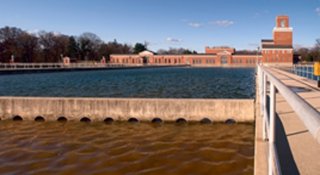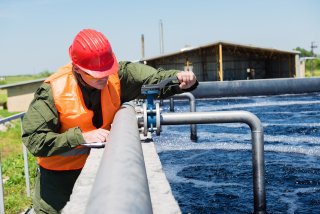Natural Radionuclides in Public Drinking Water
- Public drinking water systems test and filter out contaminants, including radionuclides.
- The EPA sets limits, called Maximum Contaminant Levels (MCLs), for radionuclides in public drinking water under the Safe Drinking Water Act.
Public drinking water systems in the United States must ensure that the water they provide to their customers meet all federal, state, and local drinking water standards. Natural radionuclides are a potential hazard.
On this page:
About Natural Radionuclides in Public Drinking Water
Public drinking water suppliers make sure that the water they deliver to the public is safe for consumption. They regularly test the water and use filters or other methods to remove chemicals and natural radionuclides that can get into water from the soil.

Many of the contaminants found in public drinking water sources occur naturally. For example, radioactive radium and uranium are found in small amounts in almost all rock and soil, and can dissolve in water. Radon, a radioactive gas, created through the decay of radium, can also naturally occur in groundwater. If it is not removed, radon in water can be released into the air as you shower or use water for other tasks like washing dishes or doing laundry.
Drinking water suppliers prevent water sources from becoming contaminated by:
- Identifying the path that water travels to reach the drinking water system to determine areas where drinking water could become contaminated.
- Preparing for emergencies, such as a flood or spill that could threaten the drinking water supply.
- Participating in voluntary programs that help keep contaminants out of drinking water. These programs include educating the public and helping businesses understand how to properly dispose of wastes that could contaminate water.
What You Can Do
- Stay informed. Public water systems follow laws that protect the public from radionuclides in drinking water. Stay informed by reading your public water system's annual Consumer Confidence Reports. These reports will help you understand where your water comes from. In addition, it should explain whether radionuclides have been detected in your water and how the water supplier treats and delivers water to your household.

